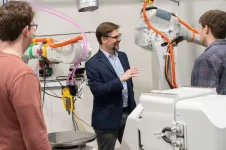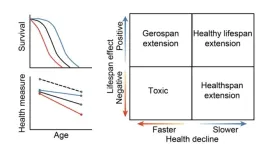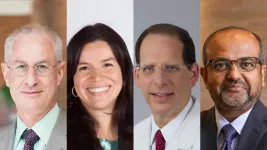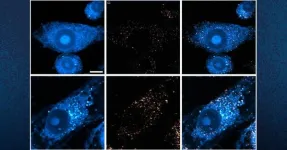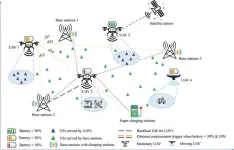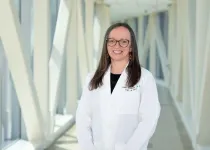These eight research projects are among the Human Frontier Science Program’s (HFSP) 93 Research Grant and Fellowship Awards recently announced to begin in 2024.
“HFSP has funded basic research in the life sciences for the benefit of humankind, and sustainability science spans some of the most complex research imaginable,” said HFSP Chief Scientific Officer Guntram Bauer. “These investigations examine highly interrelated living systems – many of which are undergoing rapid change. These projects represent extraordinary, multi-dimensional analyses.”
HFSP specifically funds research at the frontiers of the life sciences, i.e., no prior studies or data. The goal is to support curiosity-driven, interdisciplinary investigations that will challenge paradigms and open new frontiers . All research is conducted in international research teams, preferably intercontinental collaboration.
2024 HFSP Awards that bridge Life Science and Sustainability Research:
To view the awardees by nationality, laboratories, and abstracts: HFSP 2024 Research Grant Awardees Booklet and HFSP 2024 Fellowship Awardees Booklet, indexed by country of the laboratory or the fellow’s nationality.
Why Do Stressed Bats Shed More Viruses?
B. R. Ansil, of India; National Centre for Biological Sciences, India
HFSP Long-Term Fellowship at the Univ. of Oklahoma, USA, supervised by Arinjay Banerjee and Daniel Becker
Bats are reservoirs for many viruses, including coronaviruses (CoVs). Their unique physiology and immunity help them maintain these viruses without disease. Evidence suggests periods of active infections in bats (increased viral replication and shedding) are triggered by stressors that provide opportunities for transmission to humans. Food scarcity and reproduction are two such stressors that correlate with viral shedding in bats.
Trapped in Ice
HFSP Research Grant - Program
Marcel Babin, Laval University, Quebec, Canada; François Fripiat, Univ. libre de Bruxelles, Belgium;
Manu Prakash, Stanford University, USA; Eric Maréchal, University of Grenoble – Alpes, France
Bacteria, archaea and eukaryota can survive and thrive in sea ice despite freezing temperatures. Even single-celled algae survive under these conditions; yet, spinach or lettuce, in a garden during an early frost, or in a refrigerator and too close to outflow vent, will burst its cells. Surprisingly, living organisms can colonize sea ice while concentrating up to 20,000 times in this natural bioreactor, and adapt to drastic phase shifts while ice forms. The research has implications given Earth’s changing climate and possibly also insight into frozen worlds.
Temporal Structures in Complex Deep-sea Versus Surface Marine Life: from Molecules to Communities
HFSP Research Grant – Program
Kristin Tessmar-Raible, Univ. of Vienna, Austria; Orit Peleg, Univ. of Colorado Boulder, USA; Todd Oakley, Univ. of California, Santa Barbara, USA; Marjolaine Matabos, French Research Inst. for Exploitation of the Sea, France
On terrestrial environments the sun dominates the rhythms of life, but in the ocean the moon plays decisive roles. Through its tidal forces, the moon even causes rhythmicity in deep-sea environments that are out of reach of sun- and moonlight, such as hydrothermal vents. What purpose do the rhythms serve? How dark is the deep-sea really and could radiation (within or beyond the visible spectrum) emitted by the vents and/or light-producing creatures influence deep-sea rhythms? Can artificial light from deep-sea mining perturb them? How do the rhythms originate and stabilize on population and molecular scales? Bathymodiolus azoricus, deep-sea mollusks, exhibit these rhythms and can make up more than half of the biomass at hydrothermal vents.
Scaling the Impact of Viruses from Single Cells to the Global Methane Cycle
HFSP Research Grant – Program
Ashish Malik, Univ. of Aberdeen, UK; Karthik Anantharaman, Univ. of Wisconsin, USA; Graeme Nicol, Ecole Centrale de Lyon, France; Joanne Emerson, Univ. of California, Davis, USA
From the largest elephants to microscopic bacteria and archaea, all living organisms are at risk of viral infections. While the impacts to people and animals have been studied extensively, we are only beginning to recognize the scale of virus diversity and the potential for impact to terrestrial ecosystems, particularly impact of viral infections on microbial hosts and the consequences of these interactions on global biogeochemical cycling, as microorganisms play fundamental roles in the biogeochemical cycling of carbon, oxygen, methane, nitrogen, among other elements essential to life on Earth.
Understanding the Molecular Basis of Animal Cold Thermosensation
HFSP Research Grant – Program
Felix Viana, Instituto de Neurosciencias de Alicante, Spain; Alexander Sobolevsky, Columbia University, USA; Love Dalen, Stockholm University, Sweden; Carmen Domene, University of Bath, UK
Temperature changes play a key role in the survival of animals and plants, and their response through behavioral and morphological adaptation largely dictates their geographical distribution. While animals’ biological adaptations are well documented, how they sense changes in the temperature of their environment at a molecular level ― and how this subsequently influences their physiology ― are unresolved questions.
The Emergence of Collective Intelligence: Understanding Human Behavior Through AI Agents
HFSP Research Grant – Early Career
Miguel Ruiz-Garcia, Univ. Complutense de Madrid, Spain; Erin Teich, Wellesley College, USA; Andrew Saxe, Univ. College London, UK; Markus Spitzer, Martin Luther Univ. Halle-Wittenberg, Germany
When humans or other animals work in groups to collectively solve problems, what are optimal communication and collaboration strategies and how do they arise? What features of individuals enhance or suppress group ability? How do group diversity, group consistency, external competition, and the ability of group participants to anticipate each other’s behavior influence the group’s problem-solving capabilities? We will study emergent collective intelligence and the factors that enhance it.
Securing Shifting Sands – from Genes to Geoengineering
HFSP Research Grant – Early Career
Luke Dunning, Univ. of Sheffield, UK; Meagan Wengrove, Oregon State Univ., USA; Valerie Reijers, Utecht Univ., The Netherlands
Some species are called ‘ecosystem engineers’ as they drive the formation of novel landscapes. Coastal sand dunes are one such landscape, and they are shaped by the interaction of sand being moved by wind and water and the specialized species of grasses that lock sand into place. If our results show that dune grasses lack the capacity to adapt to changing conditions, we may need to rapidly adopt mitigation strategies to avoid the collapse of our coastal defenses in the future.
A Novel Approach to Tropical Dendroclimatology Using Hyperspectral Imaging and Deep Learning
HFSP Research Grant – Early Career
Meley Rannestad, Norwegian Univ. of Life Sciences, Norway; Zenebe Siyum, Mekelle Univ., Ethiopia
Dendroclimatology, extracting past climate records from annual growth rings of trees (i.e., studying tree rings) plays a critical role in climate research. The science has been extensively applied in the temperate and boreal regions, where environmental factors induce annual ring formation that show clear, predictable seasonal patterns. In the tropical latitudes, however, such as Africa, investigations have been limited as tree ring formation can be more complex, thus, improved tree-ring detecting and characterizing technologies are needed.
####
The Human Frontier Science Program was founded in 1989 by G7 nations and the European Commission to advance international research and training at the frontier of the life sciences. Its aims are to promote intercontinental collaboration and training in cutting-edge, interdisciplinary research focused on the life sciences. HFSP receives financial support from the governments or research councils of Australia, Canada, France, Germany, India, Israel, Italy, Japan, the Republic of Korea, New Zealand, Norway, Singapore, South Africa, Switzerland, the UK, the USA, as well as from the European Commission. Since 1990, more than 8,500 researchers from more than 70 countries have been supported. Of these, 29 HFSP awardees have gone on to win the Nobel Prize.
END
